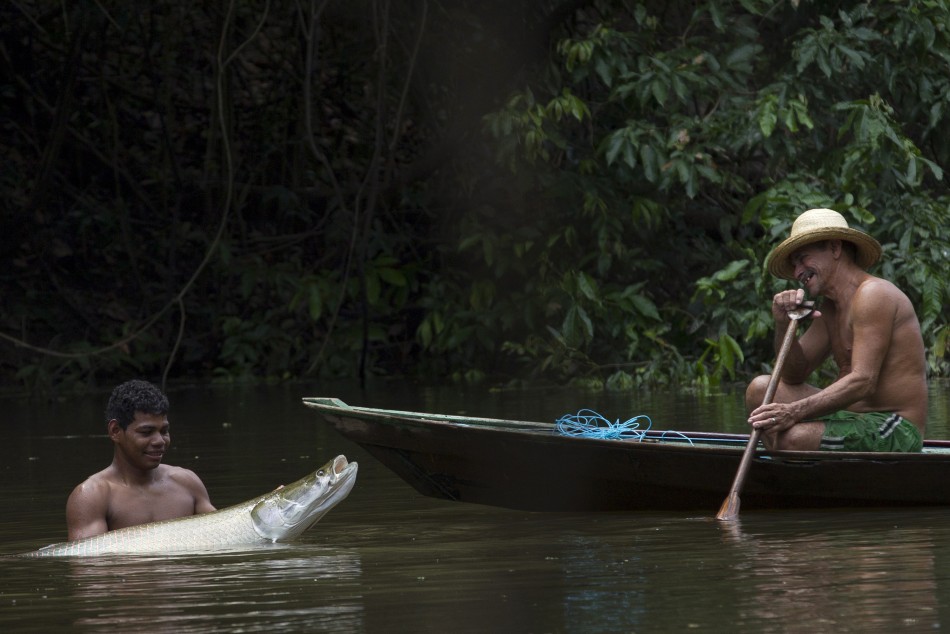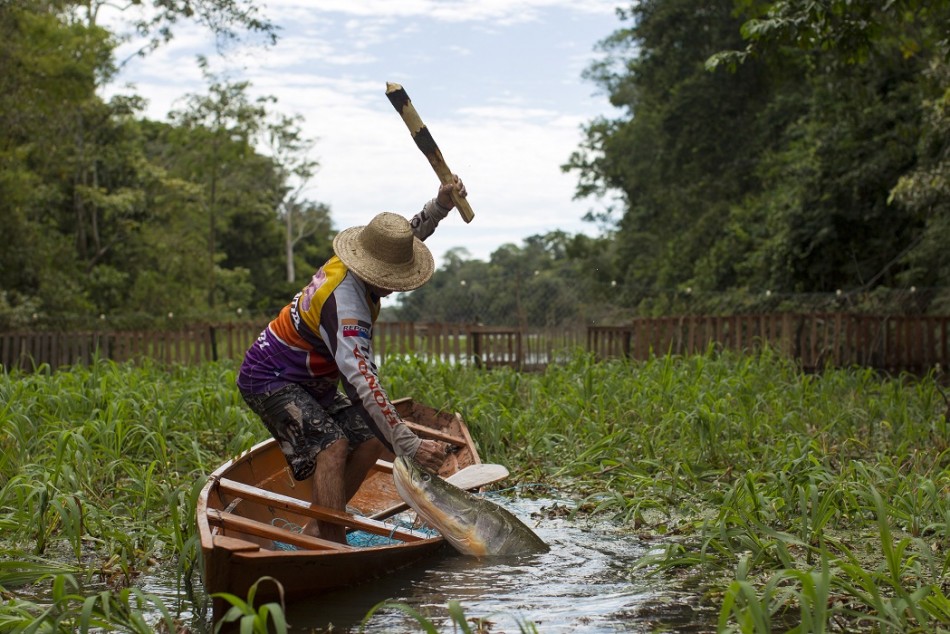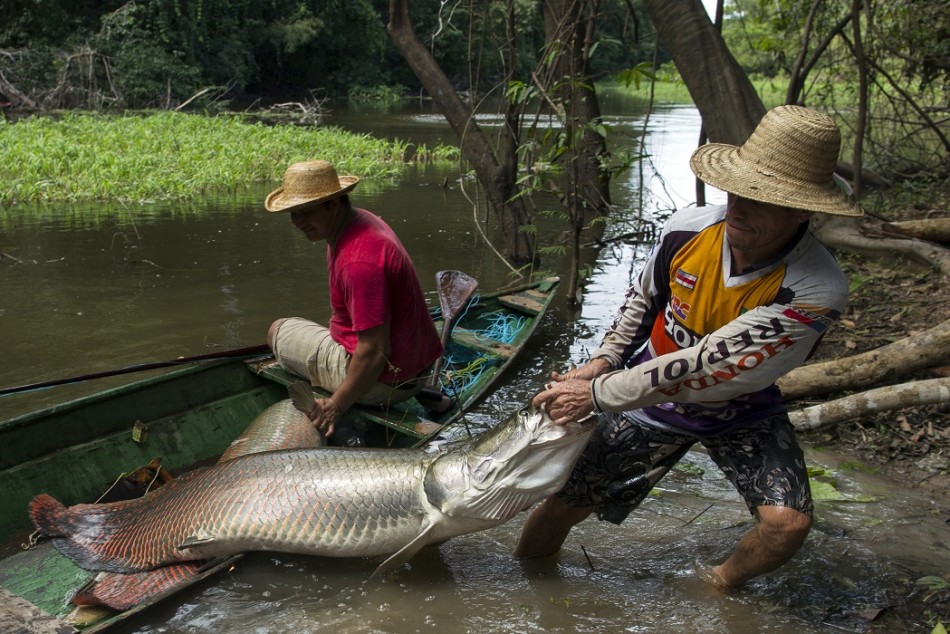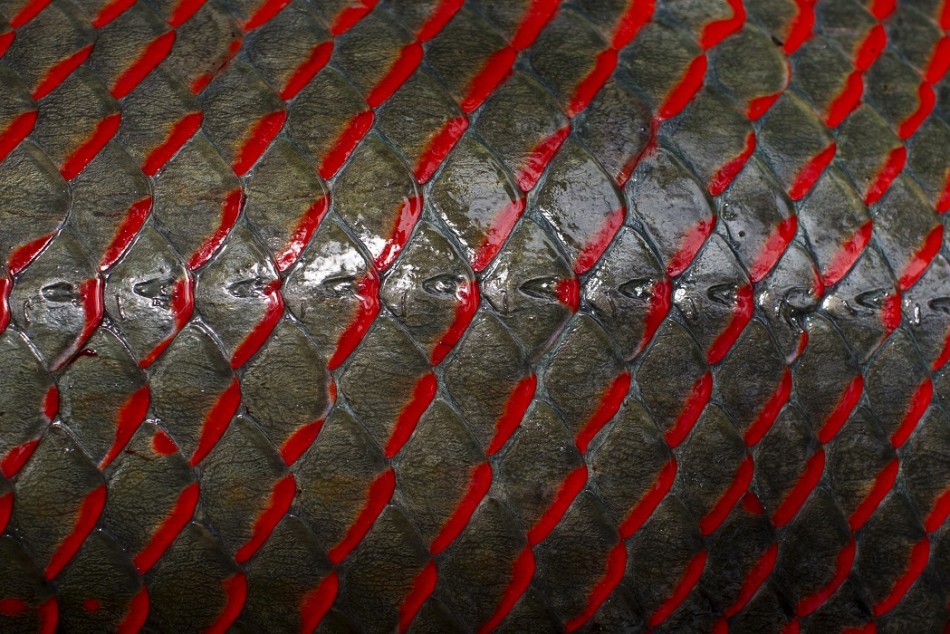The Arapaima: Catching Brazil's Living Fossils [PHOTOS]
A giant freshwater fish, the arapaima, native to the Amazon river in Brazil, can breathe air and has armour-like scales so strong it can withstand piranha attacks.
Just once a year, Brazilians are allowed to catch the fish, which is considered by biologists to be a 'living fossil'.
Prized for its meat, the arapaima (or pirarucu), is the largest freshwater fish species in South America and one of the largest in the world.
After overfishing depleted numbers in the 1980s, the fossil fish is coming back both in the wild and through farming. This subtly flavoured fish is often compared to Chilean sea bass, black cod and John Dory.
Recently a new species, dubbed arapaima leptosoma, has been discovered. It has several distinguishing features, including an elongated sensory cavity on the head, a sheath that covers part of the dorsal fin and distinctive markings on its skin.
The discovery and subsequent classification means there are now five known species of arapaima.
The most recent species was found at the confluence of Brazil's Solimoes and Purus rivers.
"Everybody for 160 years had been saying there's only one kind of arapaima. But we know now there are various species, including some not previously recognised," said Dr. Donald Stewart of the SUNY College of Environmental Science and Forestry, who made the discovery.
Watch video of the 'living fossil' arapaima below:





© Copyright IBTimes 2025. All rights reserved.






















